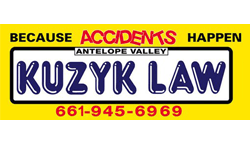


Our Results Don’t Lie
Law Firm Digital Marketing Services

Attorney SEO
We are Legal SEO experts. Our custom Attorney SEO plans include consistent, unique and high quality content to outrank your competitors and expert level Local SEO to drive in cases from Google Maps.

Google Ads
If you need an experienced and trustworthy professional to manage your Law Firms Google Ads account, you’ve come to the right place. Don’t let an amateur make mistakes when Lawyer PPC clicks can be unusually high.

Law Firm Websites
As a legal web development and design company, we provide high converting websites that provide a superior user experience.
Landing Pages
From experience, we understand the elements your Landing Pages need to convert clicks into clients. Don’t make the mistake of landing traffic on your homepage or SEO optimized pages. Let our experienced team build high converting landing pages that perfectly align with the practice area your Google Ads campaign is targeting.
“I am extremely impressed with Brian and would recommend him to any business owner. His knowledge of marketing, especially SEO, is fantastic. I have asked him to write several blog posts and a newsletter and they are the best I’ve seen. He’s a cordial, professional, reasonably priced professional. Two thumbs up!”
Bill Berenson
Berenson Injury Law
Just a few of the great law firms we’ve helped grow and attract more clients!
We can do the same for you!
A Few Client Testimonials

I am a customer for Brian and Rocket Pilots. He is a professional. He has gone above and beyond with his advertised services. Additionally, he researched and created a customized platform that is a game-changer. His services have benefitted my business significantly.

Rocket Pilots is a great SEO company. Brian is honest, knowledgeable, and provides helpful advice for ranking highly competitive key words. I highly recommend Rocket Pilots for your SEO and website needs.

I am extremely impressed with Brian and would recommend him to any business owner. His knowledge of marketing, especially SEO, is fantastic. I have asked him to write several blog posts and a newsletter and they are the best I’ve seen. He’s a cordial, professional, reasonably priced professional. Two thumbs up!

We hired Rocket Pilots to perform SEO work and services on our company website and produce new content each month. Our project is custom and requires a variety of different best practices ranging from technical tasks, optimizing pages, producing new content and improving the site’s overall structure. We have been impressed with their responsiveness, expertise and most of all, results!!

Brian has done an amazing job at helping to promote my company with Search Engine Marketing and SEO. Rocket Pilots is timely, professional and strived effortlessly to produce a hugely successful SEO campaign. My experience with Brian and Rocket Pilots staff is that they produce results, they are transparent, educational, professional, responsive, on time, courteous and an authority in SEO. Their communication and suggestions have been outstanding, helping to propel my business to another SEO results galaxy. Brian’s work is highly organized and his proposals get straight to the point offering the highest and best use SEO choices required to next level. Brian is always available to answer my questions and extremely knowledge concerning San Diego SEO, keyword research, websites, content, design, adwords, PPC, organic listings, local SEO, social marketing and much more. If your looking for an honest San Diego SEO Company or reliable online marketing, look no further. I highly recommend Brian and the Rocket Pilots crew.
An Approach That Exceeds Law Firms’ Expectations
1. Consultation
Your Free Consultation is where we learn about your current marketing efforts, challenges and digital marketing goals.
2. Planning
During the planning stage we put together a custom scope of work designed to solve your challenges and help your firm crush all marketing goals.
3. Implement
Now it’s time for my team and I to get to work and implement all aspects of the plan. This could be a Stand Alone SEO plan or could also include Landing Pages and Google Ads Management.
4. Optimize
Now that your custom marketing plan has been deployed it’s time to optimize for results. We’re focused on providing the highest ROI possible and the lowest client acquisition cost for your Law Firm.
5. Reporting
You’ve invested in your marketing, we are hard at work attracting more clients to your firm and now it’s time to review the results and crunch the numbers. We will be there every step of the way to review the metrics and analyze the reporting.















